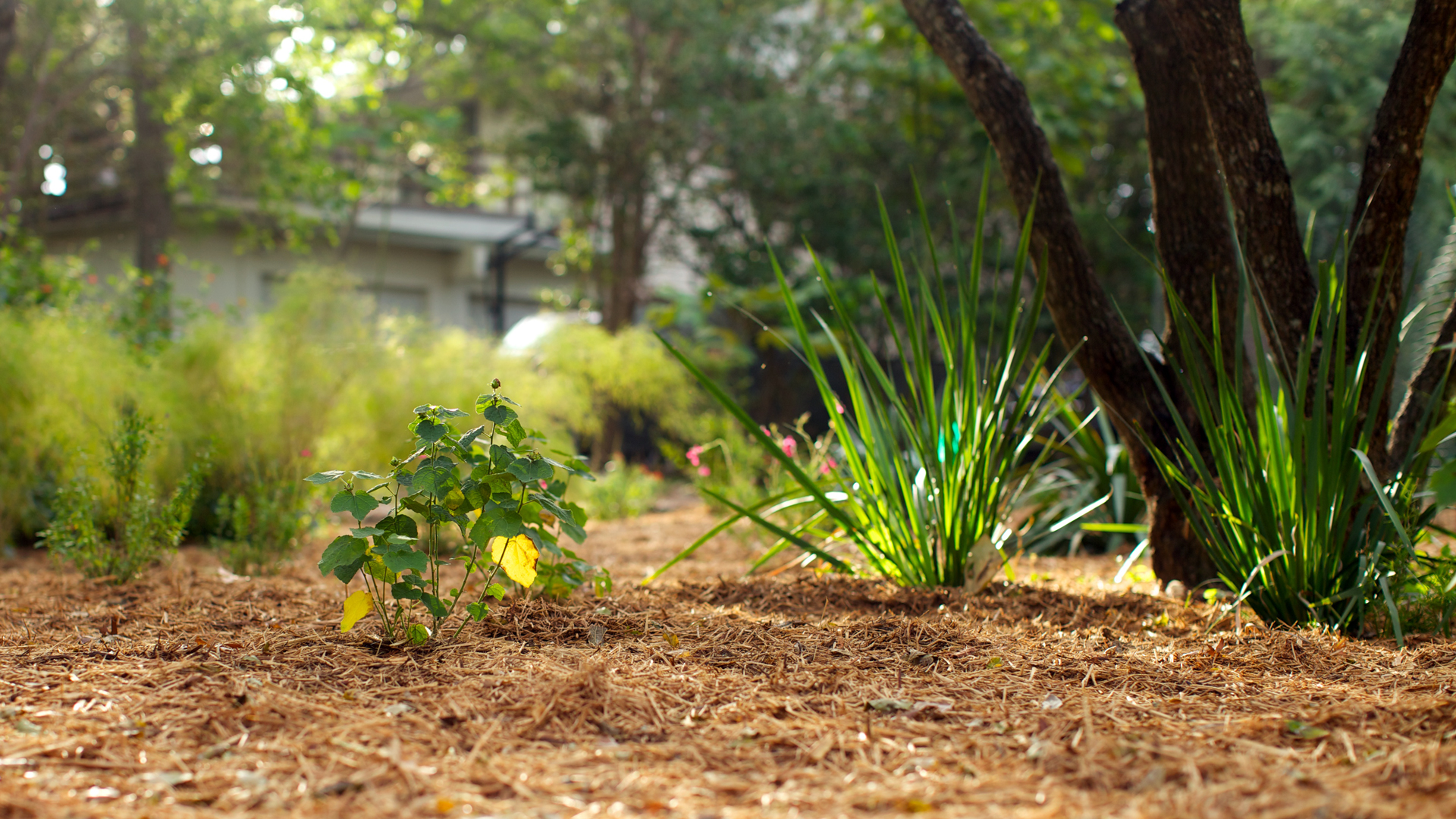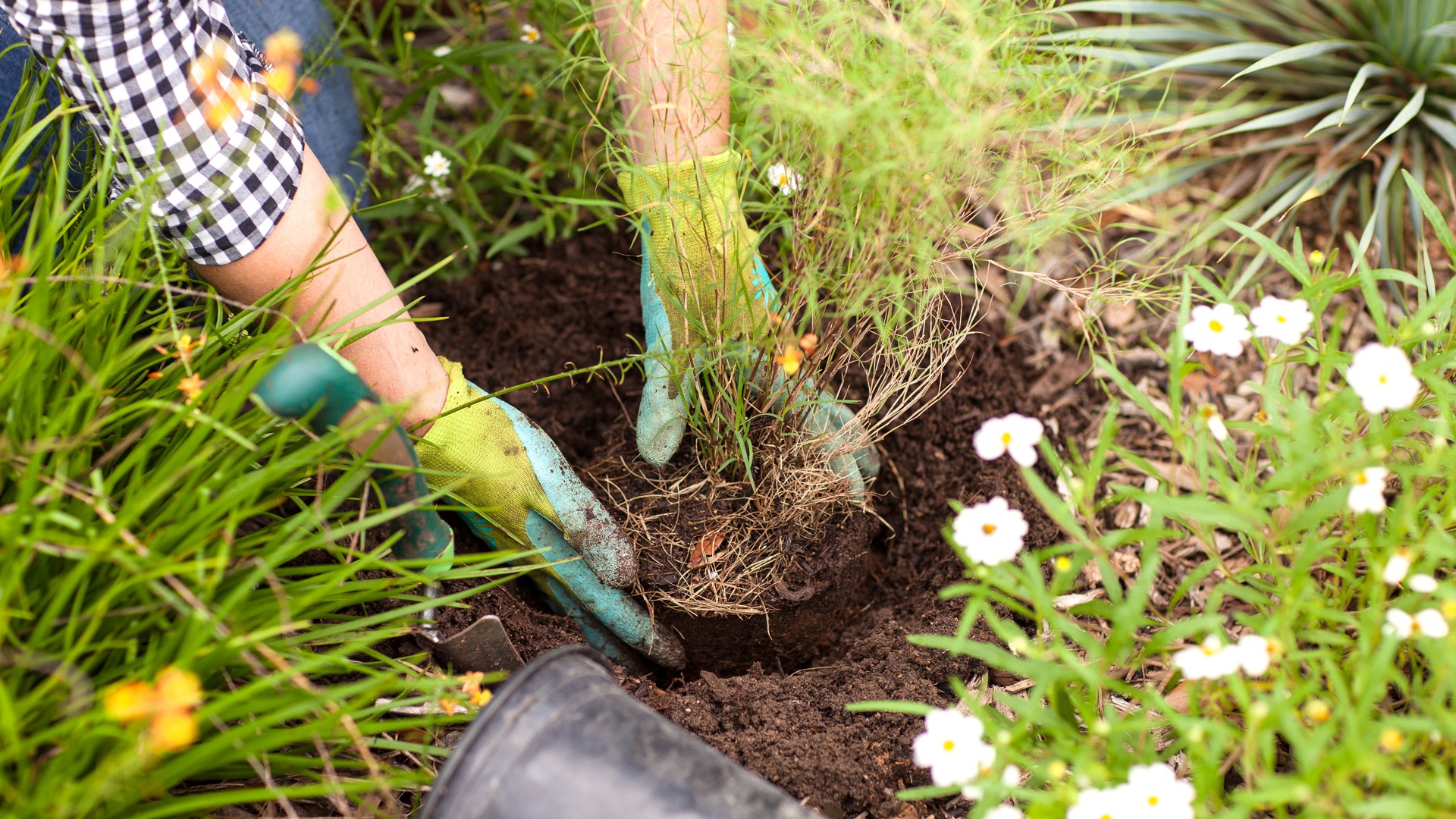New to gardening? Follow these 10 easy steps to a perfectly planted perennial garden.
With the first taste of cooler temperatures you bought a few containers of your very first WaterSaver plants — and now you’re wondering where to start.
No worries, you’ll be sporting a green thumb in no time with this quick guide to planting and establishing your gorgeous new perennials.
First things first: carefully plan your garden. And if you haven’t yet, apply for our WaterSaver Landscape Coupon.

How to plant perennials:
- Measure the fit. Check the plant tag to see how wide and tall your new plant will be at full size. Using a measuring tape, make sure it fits the area you’ll plant it. Imagine it growing in a circle and mark the center where you’ll dig the hole.
- Layout is key. If you’re planting several plants at once, set them all out in the center points. Admire your design or explore our design tips and landscape plans, if you’re not certain.
- Prepare the area. If it’s a new bed, thoroughly remove the grass. Clear any weeds from the area, making sure to remove all the roots.
- Dig the hole. Briefly water the area to make the soil easier to remove and moist for the new plant. Make the hole twice as wide as the pot with sloping sides. As for depth, the hole should never be deeper than the pot. I use my hand trowel to measure how deep the hole is and compare it to the pot to get the right planting depth.
- Water your potted plant. Doing this the day the before helps ready your plants to go in the ground.
- Remove from pot. Gently squeeze the sides of the pot to loosen the root ball. Loosely cup the plant’s stem between your thumb and fingers and turn the pot upside down, catching and supporting the root ball. You can gently loosen any encircling or tightly bound roots to encourage new growth. Don’t panic if you tear a few — just be as careful as you can.
- Plant in garden bed. Set the perennial in the ground and make sure it’s level. The goal is to make sure it’s planted at the same depth it was in the pot. Test with a stick.
- Fill the hole. You may want to mix in a little organic material like compost or old leaves to enrich the soil as you fill in the hole. Use your hands — not your feet — to press the soil down.
- Water. Give your new plant a good soaking and check to make sure the plant is still level. Follow the 3-2-1 method to establish your plant.
- Mulch. Top with a 2- to 4-inch layer of mulch to keep the soil moist and prevent weeds. Keep mulch a few inches away from the stem to avoid issues with crown rot, pests and diseases.
- Repeat for other plants. Plant individually so the soil doesn’t dry out in between.

While we recommend focusing on planting trees and shrubs in autumn (to give them a chance to settle in and establish their root systems over the winter), there’s still time to install warm-season perennials like red yucca, Pride of Barbados or muhly grass now.


